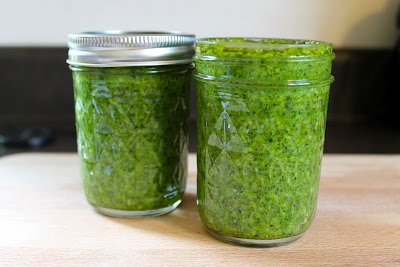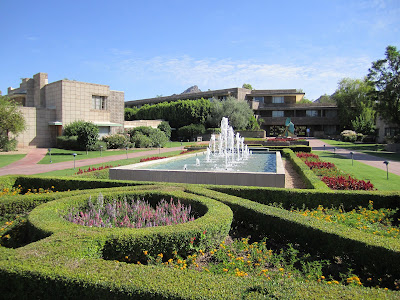It has been a long time since I have posted, but here I am again. Obviously, 2020 is a year that will go down in history and I think we are all doing the best we can to stay positive during a difficult time. I know I am trying to focus on what I can control, whether it's weeding in the garden, playing with my kids, or cleaning my house. As I finish my master's and think about transitioning back to in-person teaching (this is my 10th year!), I thought it would be a good idea to share some of my top tips for teachers. Just like in our homes, taking the time to make small changes and controlling what we can in this crazy time can make a big difference. So here we go...
Number 1: Universal Design for Learning
I was exposed to UDL at a professional development training a few years ago and I was immediately interested. I am by no means an expert, but it's a framework for teaching that just makes sense to me. The main ideas are to eliminate barriers to student learning and teach to the edges of our student populations. For me, part of the appeal of UDL was that it was not an overwhelming framework. I didn't need to change everything I was doing, but rather I could take small steps to make my practices and teaching more accessible. For example, I went through my tests for each unit and tried to really evaluate the language I used. By changing a question like "What does the Erie Canal facilitate?" to "What is the purpose of the Erie Canal?" I can make sure that I am testing my students on their knowledge instead of their vocabulary or reading skills. Another way I sought to bring down barriers was by recording myself reading the test questions. This covered my SPED students who required read aloud - making it easier for me (I didn't have to arrange for the students to leave my room and go to another teacher) and the students did not have to feel embarrassed by leaving the room. UDL also incorporates aspects of differentiated instruction, such as provide multiple ways for students to communicate their learning and promoting choice. Overall, Universal Design for Learning is a framework that we can all use to better serve our students.
More information can be found at the UDL website http://udlguidelines.cast.org/ (CAST, 2018).
Number 2: Allow the students choice whenever possible
Another part of my philosophy of teaching is the value of choice. Even as adults, we tend to be more open to new ideas more if we have a choice (I can think of professional development sessions that have been mandated vs. the ones I got to choose). Choice can increase engagement and it allows the students to fill in the gaps of their own personal learning. I usually start the year with an assignment that highlights their different strengths, which they explore through 2 surveys. The first one is one multiple intelligences ("Multiple intelligences -- Assessment," n.d.) and the second on learning styles ("What's your learning style? 20 questions," n.d.). This set the basis for the idea that they all learn in different ways and that they can choose methods and projects that play to their strengths. Most of my projects allow the students to submit a variety of products - videos, poems, songs, PowerPoints, pamphlets, etc. This is especially relevant with e-learning, where most assignments are text-based. By giving the students a chance to answer or show their learning in a different way, you are more likely to get authentic assessments of their learning.
It is also good to allow the students a choice in process as well as product. One thing I did last year was to offer my vocabulary assessment a variety of ways. The original option, called a "Pick 10," already included choice, as the students were able to pick 10 words to explore, define, and draw for each chapter. However, I also allow the students to opt out of doing that assignment if they were able to pass a vocabulary quiz with at least a 90%. The vocabulary quizzes were done on Canvas so the students were able to see their results right away and I timed the quizzes so that they were done about 2 days before our test and the "Pick 10s" were due. That way, students who did not get 90% or above were able to still do the Pick 10 and learn the vocabulary needed for the unit. By allowing my students different ways to learn our vocabulary, I was able to increase their understanding and engagement.
Number 3: Use data analytics provided on Canvas
I love Canvas. Not only has it made my life easier (hello Speed Grader and automatically graded tests), but it also allows for easy access to data. There are so many ways to use the Canvas analytics and I am sure I don't even know about half of them, but I have found it very useful for formative assessments, evaluating my tests and quizzes, and identifying the students' learning outcomes. While exit tickets are great, teachers still need to wade through a bunch of Post It notes to check that each kid got the right answer. Convert this to a similar assessment on Canvas, and both you and the students get feedback right away - no more having to grade individual papers. If you would still like "write in" answers, those are an option too, but by creating a quick 1, 2, or 3 question assessment, I can clearly see who "got it" and who needs more help. Canvas data also helps me when I write my assessments. By seeing what questions the students get wrong, I know that I need to reteach the concept or rewrite the question (this is also where UDL comes into play). Sometime I may need to do both! I have adjusted scores on tests and quizzes because I have been able to see where my assessments and teaching can be improved. Lastly, identifying learning outcomes and adding them to multiple assessments and assignments, I am able to continually monitor the students' learning. This also helps to remind them (and me) of the purpose and goals of our work. Yet again, I can use the data given to me over time to see where I can improve upon my teaching and what skills are still to be mastered.
Number 4: Don't lose sight of literacy
As a non-tested subject area teacher, it's easy to lose sight of the importance of teaching literacy. Reading and writing are often seen as the responsibilities of English teachers, but we all share in the competencies of our students. Literacy is also more than just academic reading and writing; it the way that our students move through the world. Digital, information, and cultural literacies are just as important as the traditional ones. Just the other day, I had a student message me asking how to copy and paste. She had never learned how to do this in 9 years of schooling. If that does not underscore the need for digital literacies, I don't know what does. We need to be explicit in our teaching of this skills and not presume (as the example above would show us) that our students know how to do a "good" Google search, write an email in a proper tone, or put information in their own words. Perspective is also important. As a history teacher, I don't expect my students to remember the details of the Mexican-American War, but if they leave my class better able to research, apply critical thinking skills, and understand the world around them, then I have done my job. Literacy is the cornerstone of all we do as teachers, and it must not be forgotten. Evaluate how you are teaching any one of a wide variety of literacies in your classroom. Consider taking an extra 5 minutes to walk your class through a few Google search tips, guide some pre-reading, or teach how to write a conclusion sentence. These are often the skills that will stand the test of time.
While each of these tips could be their own blog post, I hope these tips provide some inspiration and ideas to my fellow teachers. With 10 years and a master's degree under my belt, these are the frameworks and ways of teaching that have stood out to me. 2020 has been an interesting year to say the least, but perhaps it provides all of us a new perspective and chance to reevaluate. Small changes and a commitment to improvement can make us better teachers and enhance the learning of our students.
References


















































